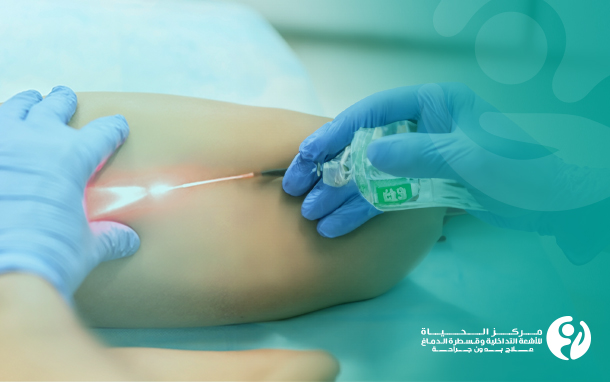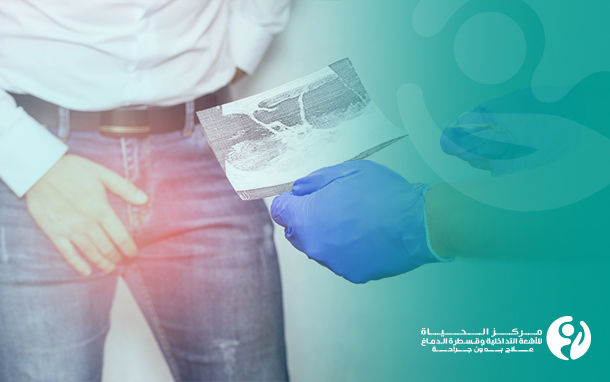Varicocele Treatment with Interventional Radiology
Varicocele is a common condition that occurs when the veins in the testicle become enlarged. This condition can affect a man’s fertility and cause uncomfortable symptoms such as pain and swelling. Many methods and techniques have been developed to treat varicocele. One of these modern techniques is interventional radiology for varicocele treatment. In this article, we will discuss how interventional radiology can be an effective option for treating varicocele.
What is Interventional Radiology?
Al Hayat Center for Interventional Radiology and Neurointervention in Iraq applies the latest innovative equipment for interventional radiology. Interventional radiology is a modern therapeutic technique used in medical treatments, including the non-surgical treatment of varicocele. This technique relies on accessing the dilated testicular veins through the femoral or neck vein, guided by high-quality imaging, and introducing coils through the catheter to block these dilated veins.
What is Varicocele?
Varicocele is a medical condition that occurs when the veins in the testicle become dilated; this leads to swelling and enlargement of the testicle. Varicocele happens when the vein valves impede the proper blood circulation in the testicle, causing blood accumulation in the blood vessels and their dilation. Varicocele can be painful and have negative effects on a man's health and fertility.
Symptoms of Varicocele:
1. Testicular pain: The pain can be acute or chronic and increases after sitting or standing for long periods.
2. Testicular swelling: Blood accumulation in the veins can lead to testicular swelling.
3. Decreased testicular size: In some cases, the testicle can be damaged by the varicocele and become smaller in size.
4. Testicular irregularity: Some individuals may feel heaviness in the testicle or an abnormal shape.
5. Infertility: Varicocele can cause the inability to conceive, which negatively affects the patient’s psychological state.
For more information and contact, please call 9647744700048.
Treatment of varicocele with interventional radiology without surgery:
Varicocele treatment with interventional radiology at Al Hayat Center for Interventional Radiology and Neurointervention requires several steps. Here is an overview of these steps:
1. Evaluation and diagnosis: The specialist doctor evaluates the condition of the testicle and estimates the size and extent of the varicocele using examinations such as a physical exam of the testicle and additional tests like X-rays or CT scans with the advanced imaging equipment available at Al Hayat Center for Interventional Radiology and Neurointervention, or MRI imaging to determine the size and location of the varicocele.
2. Preparation for treatment: The patient must be ready for the interventional radiology treatment. The patient lies on his back.
3. Local anesthesia: Local anesthesia is applied to ensure the patient's comfort during the treatment and to avoid pain, where the target area around the testicle is anesthetized with a local injection to anesthetize the skin and tissues near the testicle.
4. Interventional radiology guidance: A fine catheter is guided toward the dilated veins in the testicle using ultrasound or X-ray imaging to ensure precise access to the desired location.
5. Closing the veins: The dilated veins are then closed using coils or glue-like materials. The blood flow in the testicle improves after the dilated veins are closed.
6. Rest and recovery: The patient needs a short rest after interventional radiology treatment and can return to daily activities relatively quickly.
7. Follow-up and aftercare: After undergoing interventional radiology treatment, the health care team monitors the patient to ensure symptoms improvement and the desired results achievement. This follow-up may include additional tests, such as semen analysis, to evaluate the impact of the treatment on his fertility.
The difference between interventional radiology and traditional surgery:
When a man suffers from varicocele, the veins that carry blood from the testicles become enlarged. Varicocele is a common problem that affects men, and it may cause symptoms such as pain, discomfort, and infertility. Therefore, varicocele treatment requires medical intervention to correct this problem.
Traditional surgery is one of the methods of treating varicocele. This procedure involves removing the dilated veins through traditional surgery using an incision in the testicle. Although this procedure is considered effective in repairing varicocele, many disadvantages and complications may occur.
Disadvantages of traditional surgery for the treatment of testicular varicocele:
1- Surgical complications: The procedure may involve risks such as bleeding, infection, and fluid accumulation in the testicle.
2- Pain and swelling: The patient may experience pain and swelling in the treated area after surgery, and recovery and healing may take a long time.
3- Impact on fertility: The surgery may have an impact on male fertility, as the sperm ducts can be damaged, or there may be disturbances in sperm production.
In contrast, interventional radiology is considered a better treatment option for testicular varicocele. Interventional radiology uses the technique of venous catheterization to access the dilated veins in the testicle and inject coils or adhesive materials to close them without surgery.
Benefits of Interventional Radiology for the treatment of testicular varicocele:
1. Minimally invasive and non-surgical: Interventional radiology treatment is a minimally invasive and non-surgical procedure, which reduces the potential for surgical complications and speeds up recovery.
2. Effective and successful treatment: Interventional radiology treatment for varicocele is effective and achieves high success rates in many cases. According to research studies, the success rate of interventional radiology treatment for varicocele ranges between 70% to 90%.
3. Symptom improvement: Interventional radiology treatment can improve the symptoms caused by varicocele, such as pain and swelling. Patients can benefit from symptom relief and the ability to restore their daily lives.
4. Absence of pain and swelling: Interventional radiology treatment is usually less painful and less swollen than traditional surgery.
5. Faster return to daily activities: Due to its non-surgical nature, patients can resume their daily activities more quickly after interventional radiology treatment.
6. Preservation of fertility: Varicocele can negatively affect the male fertility. Additionally, surgical treatment may lead to unintentional ligation of the vas deferens. However, interventional radiology treatment can help restore and improve male fertility by improving blood flow and closing the dilated veins.
7. Bilateral varicocele treatment: Interventional radiology treatment allows for the treatment of both testicles, if the condition requires, during the same procedure, which cannot happen in traditional surgery.
Can interventional radiology treat varicocele permanently?
Yes, interventional radiology can treat varicocele permanently in some cases. Upon treating varicocele by interventional radiology, it targets the dilated veins and works to close them off using coils or glue-like materials. Once the dilated veins are closed off, the blood flow improves, and the normal function of the testicle is restored.
In general, interventional radiology treatment is considered an effective and reliable option for treating varicocele. However, our medical team evaluate each case individually, and decide the appropriate decision based on the diagnosis and recommendations of the medical team. The focus of Al Hayat Center for Interventional Radiology and Neurointervention in Karbala is to provide the best medical service to all its patients.

